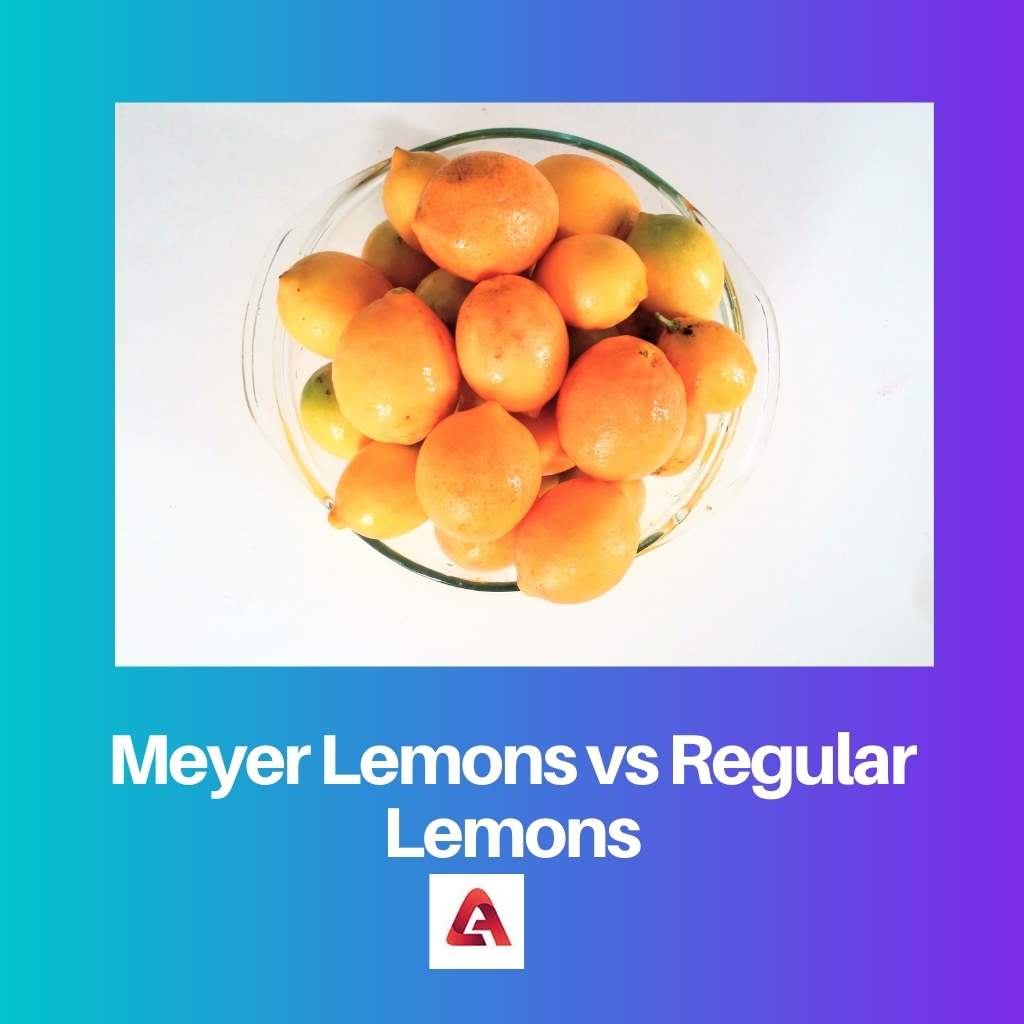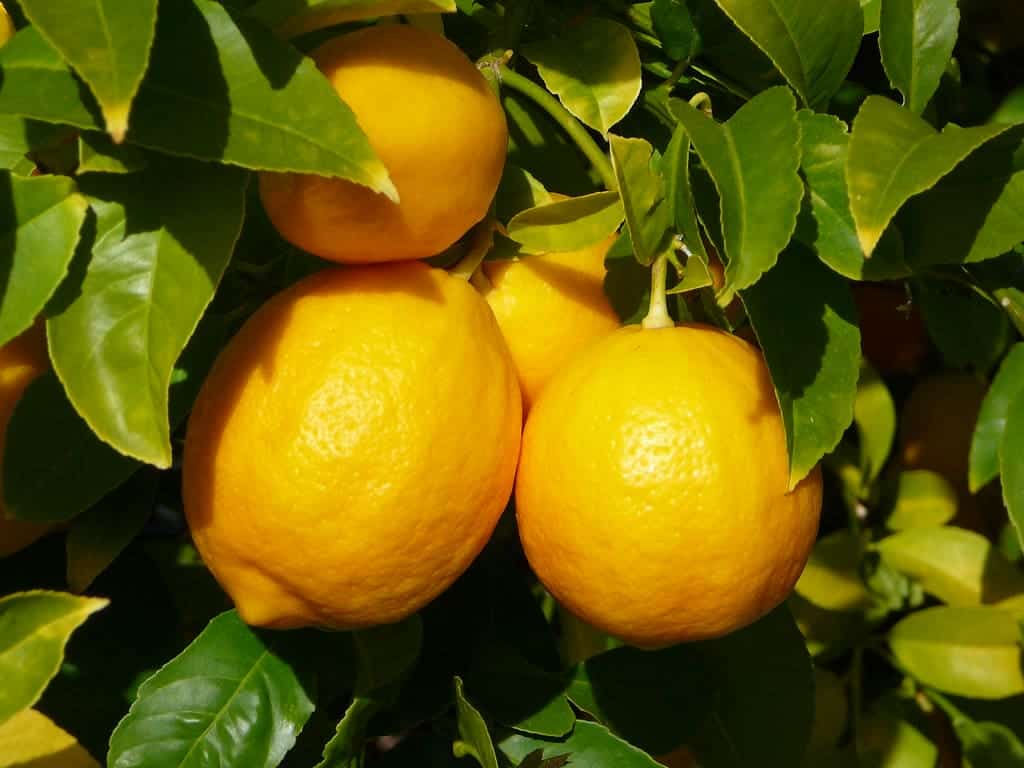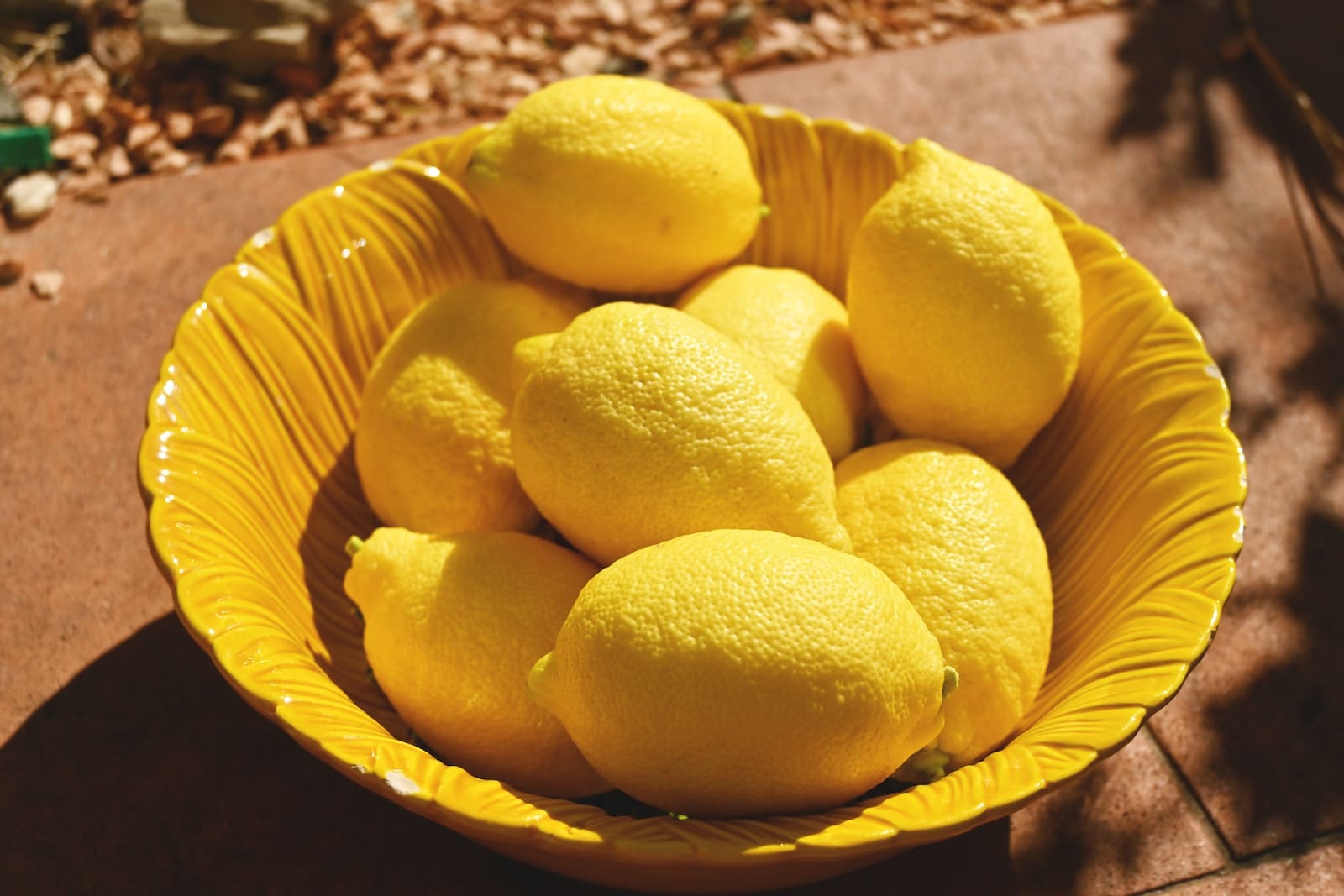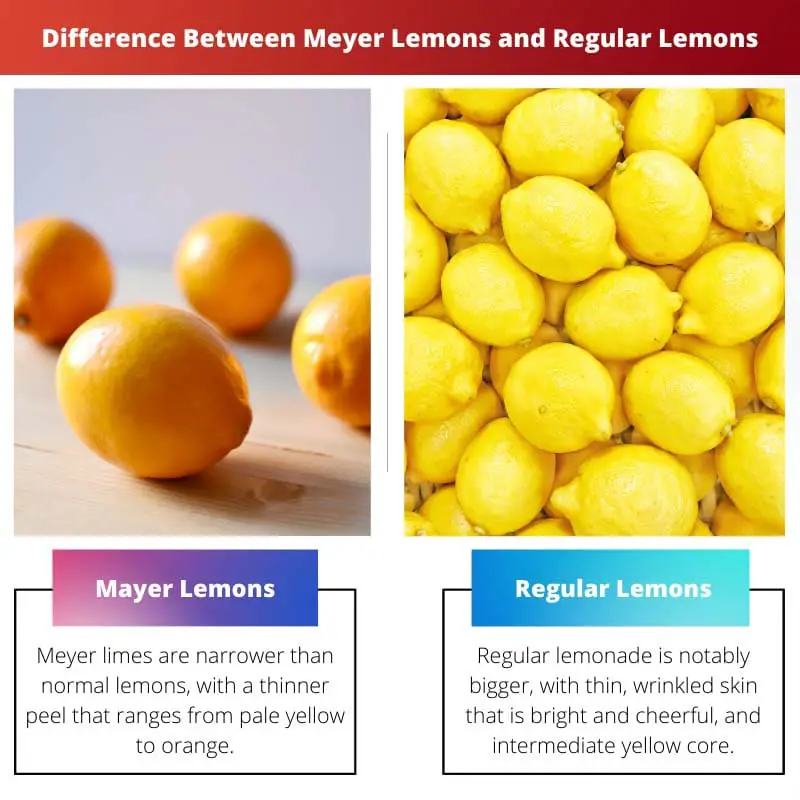Lemons, in particular, are one of the foremost commonly utilized fresh flavouring elements in the cuisine art forms. Lemons may be used in almost every culinary technique.
Lemons can readily boost a dish’s zesty and tart flavour while also providing a bright and delectable scent. They can also enhance the taste of other components added to a meal; they are known as flavour enhancers.
Key Takeaways
- Meyer lemons are smaller, rounder, and have thinner, smoother skin than regular lemons.
- Meyer lemons have a sweeter, more complex flavor, while regular lemons are more acidic and tart.
- Regular lemons are widely available and used for various culinary purposes, while Meyer lemons are seasonal and primarily used in gourmet dishes and desserts.
Meyer Lemons vs Regular Lemons
Meyer lemons are a hybrid citrus fruit that is a cross between a lemon and a mandarin orange, and they are smaller and rounder than conventional lemons. Lemons with regular skin are larger, more acidic, and have thicker, bumpier skin.

A Meyer Lemon’s look differs somewhat from a conventional lemonade’s. It is much more spherical, has a faint reddish tinge, and has mostly palatable skin.
A Meyer lemon has a less caustic flavour than a conventional lemon, and its flavour may be described as a mix between a regular clove and an orange. It can thrive in any warm environment, even containers inside.
A regular lemonade is a bright yellowish fruit that may be found in almost every store or food stand. Lemons grow in any climate where the thermometer does not dip below 55°F.
Florida is the biggest producer of lemons in the United States. Lemons are moderately elongated or peaked at the extremities, with resistant skin and a stinging pith. Lemon is a common element in recipes.
Comparison Table
| Parameters of Comparison | Meyer Lemons | Regular Lemons |
|---|---|---|
| Appearances | Meyer limes are narrower than normal lemons, with a thinner peel that ranges from pale yellow to orange. | Regular lemonade is notably bigger, with thin, wrinkled skin that is bright and cheerful, and intermediate yellow core |
| Taste | Meyer limes lack the tartness of normal lemons. Nevertheless they are considerably more delectable. | Lemons are very acidic in their natural state. They’re somewhat sweet with a sharpness that would make your lips grimace. |
| Availability | Meyer limes are more seasonally available. From December until May is the optimum time to look for them. | Regular limes are available all year. throughout the year, you may find them in the grocery area. |
| Sweet Taste | Meyer limes have a less natural sweetness and a milder flavor than normal limes. | Regular limes have a naturally sweet flavor than Meyer lemonade. |
| Texture | Meyer limes are soft and more nearly spherical than normal lemons. | Regular lemons are less smooth than Meyer lemons. |
What is Meyer Lemons?
Meyer lemons, which have been original to China, have a distinct lemon flavour and intensity, but far less than Crescent or Lisbon limes.
They’re sour sufficiently that you really can add them raw to a variety of recipes; while you definitely might not want to eat one completely like an orange, you can combine bits or chunks of Meyer lemonade into salads and chillies.
Meyer lemon essence has a far more flowery, even faintly spicy, flavour.
The extract on a Meyer lime is also narrower, and there is less angry old white pith from underneath it, which appears to mean you can feed the whole fruit in certain planning and order to prepare.
If you do this, make sure your fruit is edible and inadequately treated with varnish or other adhesives or that you’ve thoroughly cleaned it under hot deionized water to remove any stains.
Lemons were planted as decorative plants until they were even a commercial crop, which makes perfect sense when you see a gorgeous tree loaded with vibrant tropical fruit.
Meyer lemons are shorter, flatter, and smoother-skinned by their more prevalent elongated and wrinkled cousins, as seen by their fruit. Meyer lemons have a darker, more magenta tint than Lisbon lemonade, which is bright yellow.

What are Regular Lemons?
The common lemonade has been most likely originally grown in the Classical World. Over several years, lemon production spread from Northern Africa and the Mediterranean East to Mainland Europe.
Their inaugural lemon harvest in the United States began in the later 1800s in Florida and California.
Nevertheless, a severe freeze wiped out Florida’s lemonade market, which would not recover until the 1950s. The lime juice was in a growing market at the time.
A normal lemonade is a bright yellow berry that may be found in almost every store or food store. Lemons flourish in any climate where the weather does not dip lower than 55°F. Florida is the biggest producer of lemons in the United States.
Lemons are marginally lengthened or hooked at the edges, with robust, impenetrable skin and a strong sour pith. Lemon is both a popular garnish and a common culinary component.
Limes and lime soft drinks are high in the preventative vitamin C. Antioxidant properties may aid in the prevention of superoxide radical disruption to cells, which can increase the risk of cancer.
However, it is unknown how electrons can mitigate cancer. Pouring a little lime juice into a salad with baby lettuce leaves will help boost protein and vitamin C consumption.

Main Differences Between Meyer Lemons and Regular Lemons
- Regular Lemons are very acidic in their natural state. They’re somewhat sweet with a sharpness that would make your lips grimace. Meyer limes lack the tartness of normal lemons.
- Meyer lemons are much smoother and have a more sphere-like shape than regular lemons. Regular lemons are less smooth than Meyer lemons.
- Regular lemonade is notably bigger, with thin, wrinkled, bright, cheerful skin and an intermediate yellow core. In contrast, Meyer limes are narrower and rounder than normal lemons, with a softer, thinner peel that ranges from pale yellow to orange and darker yellow content.
- Regular lemons are substantially bigger and more vibrant in color. Meyer lemons, on the contrary, have intense yellow peel and vivid yellow innards.
- Regular limes are available all year. Throughout the year, you may find them in the grocery area. Whereas Meyer limes are more seasonally available. From December until May is the optimum time to look for them.

- https://www.sciencedirect.com/science/article/pii/S0889157515000599
- https://onlinelibrary.wiley.com/doi/abs/10.1111/j.1365-2621.1967.tb01954.x

I’m sorry, but I think the article is not correct. It needs to provide more credible sources for this information.
This is an interesting article. I never know the differences between Meyer Lemons and Regular Lemons.
Yes, I agree with you, Vanessa. This article is very informative. I’ve learned a lot.
This information is very interesting, but I think the author could have made it a bit more entertaining.
You are right, Cyoung. This information was presented in a very dry manner.
This is fascinating. I didn’t know that Meyer lemons and Regular lemons were so different.
I think this article is not completely correct. The author fails to mention some important aspects of both types of lemons.
I always knew there was a difference between Meyer lemons and Regular lemons, but I didn’t know it was so vast.
Yes, I agree. It’s impressive to see the differences between the two.
I think the article is missing one important detail about Meyer lemons. It is very important to mention the medicinal properties of these lemons.